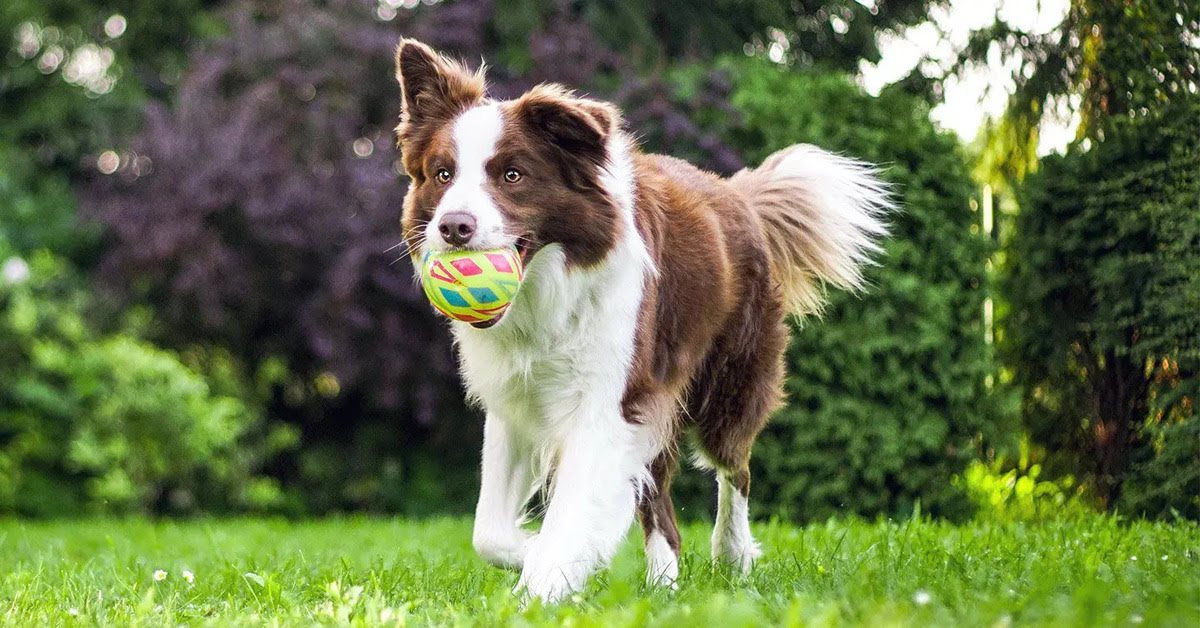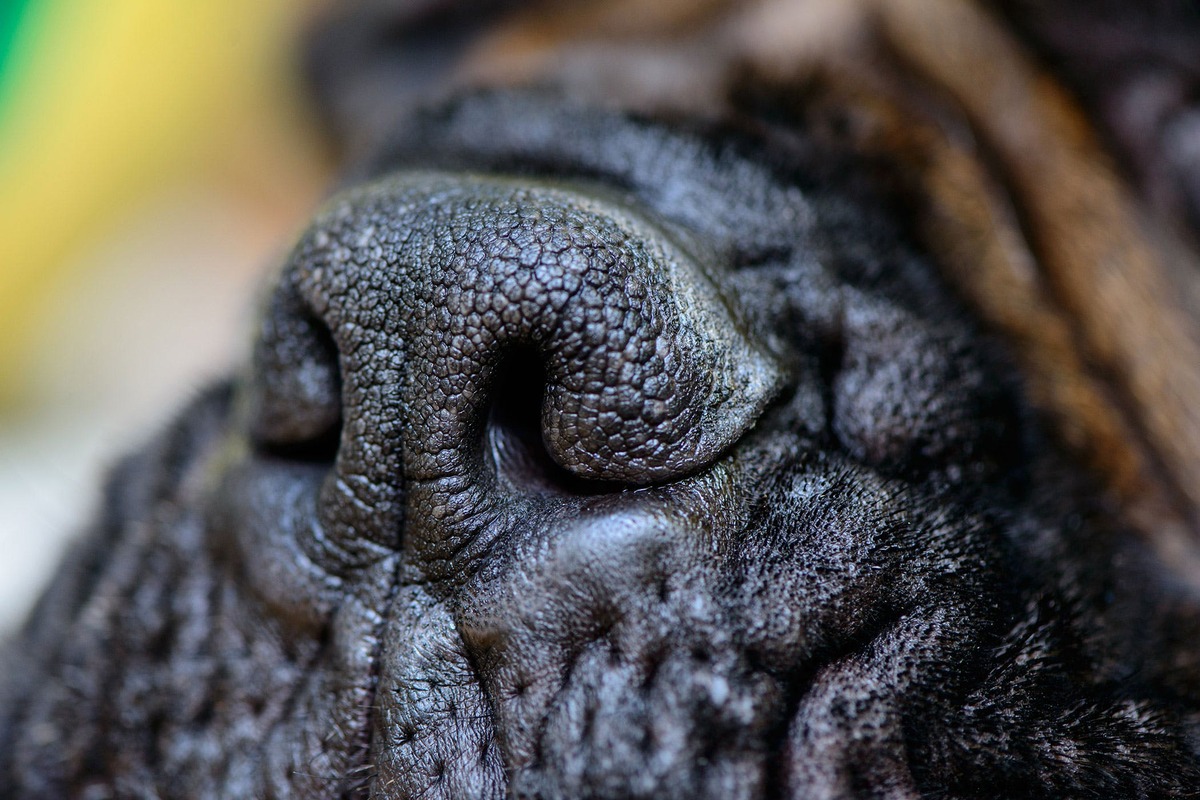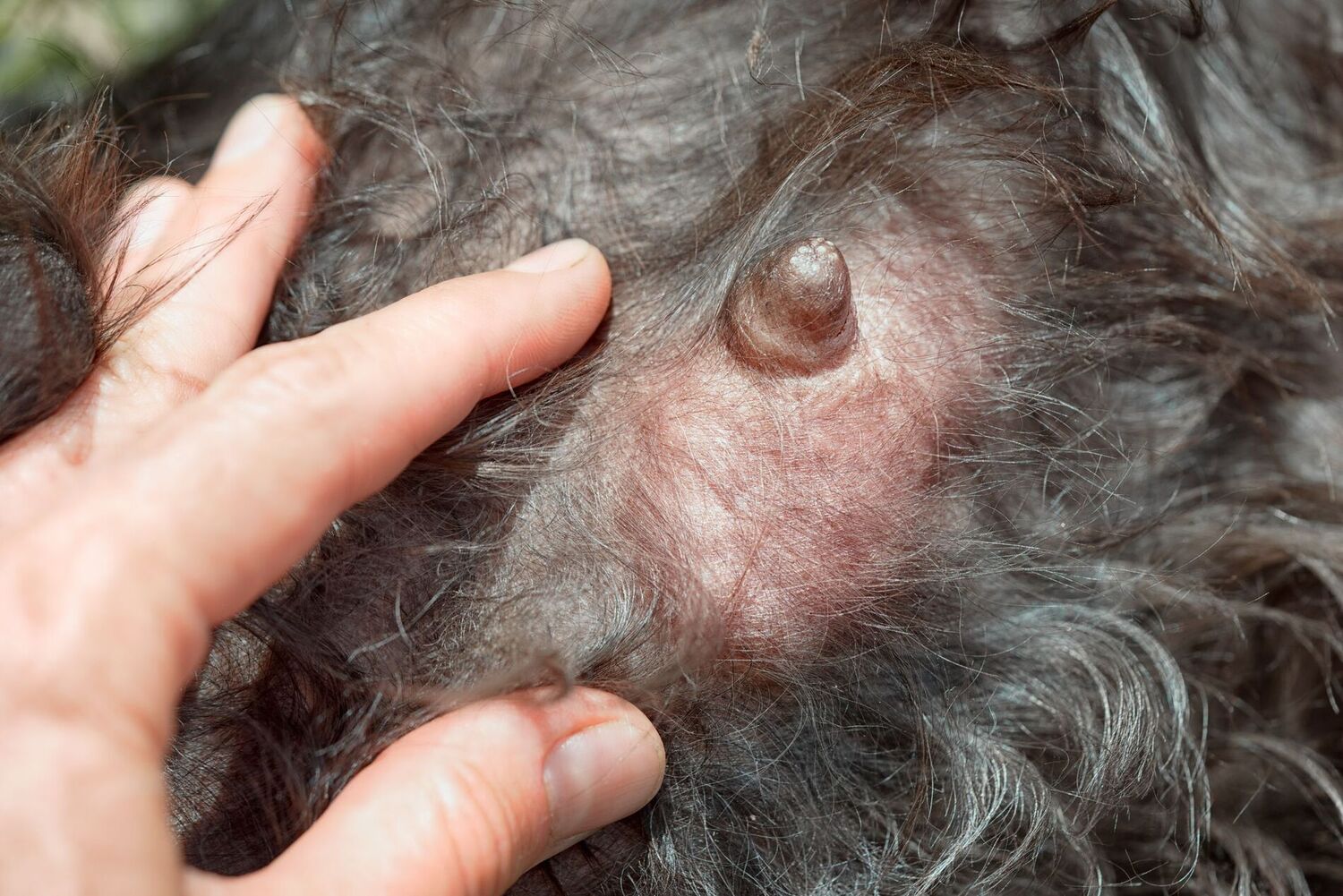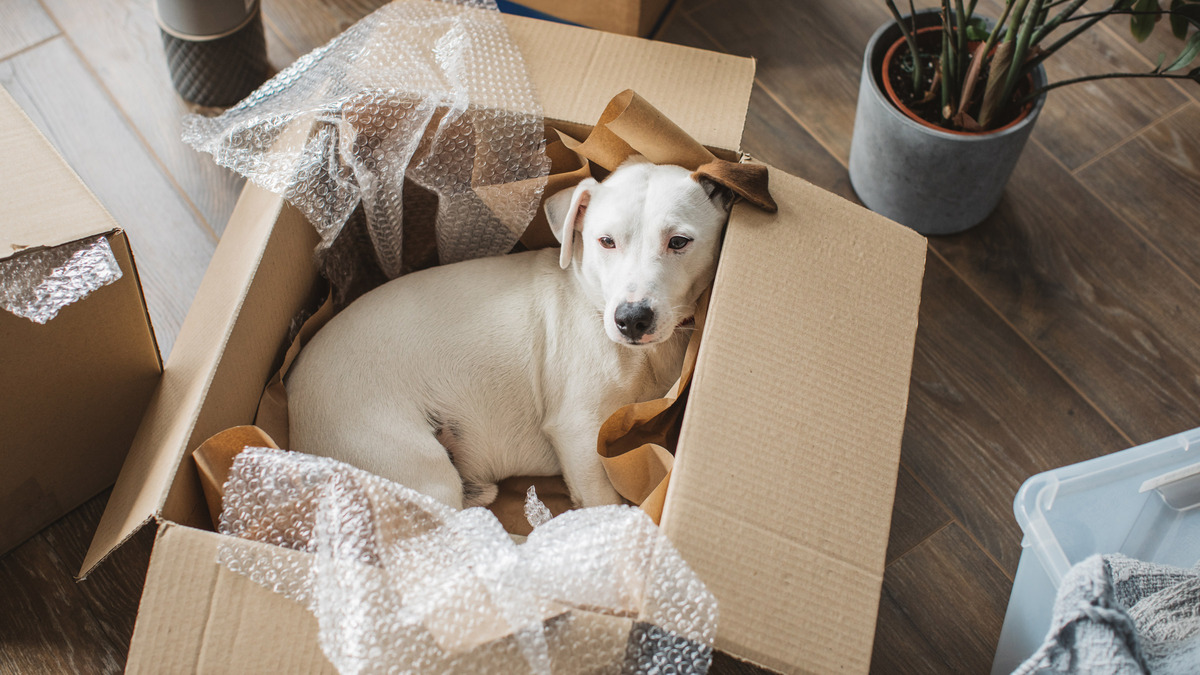Home>Health & Wellness>Common Health Issues>Dog Has Parasite: How Can I Clean The Lawn


Common Health Issues
Dog Has Parasite: How Can I Clean The Lawn
Published: February 8, 2024
Learn how to prevent and clean up after parasites in your dog's environment. Discover effective solutions for common health issues in pets.
(Many of the links in this article redirect to a specific reviewed product. Your purchase of these products through affiliate links helps to generate commission for Pawsomeoldies.com, at no extra cost. Learn more)
Table of Contents
Introduction
Discovering that your dog has a parasite can be a concerning and distressing experience for any pet owner. Not only does it pose a risk to your dog's health, but it can also impact the well-being of your family members. One common issue that pet owners face is dealing with parasites in their dog's environment, particularly in the lawn where their furry companions spend a significant amount of time. Understanding how to effectively clean the lawn and prevent future infestations is crucial for maintaining a safe and healthy environment for both your dog and your family.
Parasites such as fleas, ticks, and intestinal worms can thrive in outdoor spaces, including lawns, posing a threat to your dog's health. These parasites can cause a range of health issues, from skin irritation and discomfort to more serious conditions such as anemia and infectious diseases. Additionally, some parasites can be transmitted to humans, leading to potential health concerns for the entire family.
In this article, we will delve into the intricacies of dealing with a parasitic infestation in your dog's environment, specifically focusing on the lawn. By gaining a deeper understanding of the nature of the parasite, the risks it poses to both dogs and humans, and the necessary steps to clean the lawn and prevent future infestations, you will be better equipped to safeguard the well-being of your beloved pet and your family.
Let's embark on a journey to explore the world of parasites and discover effective strategies for maintaining a parasite-free lawn, ensuring a safe and joyful environment for your canine companion.
Understanding the parasite
Parasites are organisms that live on or inside another organism, known as the host, and derive their nourishment at the host's expense. In the context of dogs and their environment, common parasites include fleas, ticks, and intestinal worms. Understanding the characteristics and behavior of these parasites is essential in effectively managing and preventing infestations.
Fleas are small, wingless insects that feed on the blood of their hosts. They are notorious for causing intense itching and discomfort in dogs, often leading to skin irritation and allergic reactions. These tiny pests reproduce rapidly, making it crucial to address infestations promptly to prevent their proliferation in the lawn and the dog's living spaces.
Ticks are external parasites that attach themselves to the skin of dogs to feed on their blood. These arachnids can transmit various diseases, posing a significant health risk to both dogs and humans. Ticks are commonly found in outdoor environments, including lawns, where they await potential hosts. Understanding their habits and preferred habitats is crucial in implementing effective preventive measures.
Intestinal worms, including roundworms, hookworms, and tapeworms, are internal parasites that can affect dogs. These worms can be contracted through the ingestion of contaminated soil or through contact with infected animals. Once inside the dog's body, they can cause a range of health issues, including digestive disturbances and nutrient deficiencies. Understanding the life cycle of these parasites is essential in preventing their spread in the lawn and minimizing the risk of reinfestation.
By gaining a deeper understanding of the parasites that can affect dogs and their environment, pet owners can proactively implement measures to mitigate the risk of infestations. This knowledge empowers dog owners to take targeted actions to safeguard their pets' well-being and maintain a healthy outdoor environment.
Risks to dogs and humans
Parasitic infestations in dogs pose significant risks to both the animals and the humans with whom they interact. Understanding these risks is crucial for implementing effective preventive measures and addressing infestations promptly.
Risks to Dogs:
-
Health Complications: Parasites such as fleas, ticks, and intestinal worms can cause a range of health issues in dogs. Fleas can lead to skin irritation, allergic reactions, and even anemia in severe cases. Ticks are notorious for transmitting diseases such as Lyme disease and ehrlichiosis, which can have serious implications for a dog's health. Intestinal worms can cause digestive disturbances, nutrient deficiencies, and in severe cases, they can lead to life-threatening conditions.
-
Discomfort and Stress: Infestations of parasites can cause significant discomfort and stress for dogs. Constant itching and irritation from flea bites can lead to skin damage and secondary infections. Ticks can cause discomfort and distress, and the act of removing them can be painful for the dog. Intestinal worms can lead to digestive discomfort and malaise, impacting the overall well-being of the dog.
-
Transmission to Humans: Some parasites that affect dogs can also pose risks to human health. For example, certain types of ticks can transmit diseases such as Lyme disease and Rocky Mountain spotted fever to humans. Additionally, certain intestinal parasites can be transmitted to humans, particularly children, through close contact with infected dogs or contaminated environments.
Risks to Humans:
-
Zoonotic Diseases: Zoonotic diseases are those that can be transmitted from animals to humans. Parasites such as ticks and certain intestinal worms can carry zoonotic pathogens, posing a risk of transmission to humans. This can lead to a range of health issues, from mild discomfort to more severe conditions requiring medical attention.
-
Environmental Contamination: Parasite eggs and larvae shed by infected dogs can contaminate the outdoor environment, including lawns and gardens. This poses a risk of human exposure, particularly in households with children who may come into contact with contaminated soil during outdoor activities.
-
Impact on Family Dynamics: Dealing with a parasitic infestation in a pet can cause stress and concern within the family. The well-being of the beloved pet is a priority, and the potential risk of transmission to family members can create anxiety and a sense of urgency in addressing the issue.
Understanding these risks underscores the importance of proactive measures to prevent and address parasitic infestations in dogs and their environment. By prioritizing the health and well-being of both dogs and humans, pet owners can create a safe and harmonious living environment for all members of the household.
Cleaning the lawn
Cleaning the lawn is a crucial step in managing and preventing parasitic infestations in dogs' outdoor environment. It involves targeted actions to eliminate parasites and their habitats, creating a safe and healthy space for both dogs and humans to enjoy.
Removing Organic Debris:
Begin the cleaning process by removing organic debris such as leaves, grass clippings, and fallen branches from the lawn. These materials provide ideal hiding spots for parasites and their eggs, creating a conducive environment for infestations. Regular raking and removal of organic debris help disrupt the habitats of fleas, ticks, and other parasites, reducing their presence in the lawn.
Mowing and Trimming:
Maintaining a well-groomed lawn through regular mowing and trimming is essential in controlling parasites. Shorter grass reduces the humidity and shade that parasites thrive in, making the environment less hospitable for their survival. Additionally, mowing the lawn exposes parasites to sunlight, which can help diminish their populations.
Application of Parasite Control Products:
Consider using pet-safe parasite control products specifically designed for outdoor use. These products may include environmentally friendly sprays or granules that target fleas, ticks, and other pests. When applying these products, ensure that they are safe for pets and follow the instructions carefully to achieve optimal results without posing any risk to the dog or the surrounding environment.
Environmental Treatments:
In cases of severe infestations, seeking professional environmental treatments from pest control experts may be necessary. These treatments can target parasites at various life stages, effectively reducing their populations in the lawn. It is important to choose treatments that are safe for pets and to follow any post-treatment guidelines to ensure the well-being of the dog and the family.
Washing and Sanitizing Pet Accessories:
Regularly washing and sanitizing pet accessories such as bedding, toys, and outdoor shelters is an essential part of lawn cleaning. Parasites can take refuge in these items, posing a risk of reinfestation. Using pet-safe detergents and thoroughly drying the accessories can help eliminate parasites and their eggs, contributing to a cleaner and safer outdoor environment for the dog.
Implementing Natural Remedies:
Exploring natural remedies such as diatomaceous earth and nematodes can complement the cleaning process. Diatomaceous earth, a natural powder, can be sprinkled in the lawn to help control parasites, while beneficial nematodes can be introduced to target flea larvae and other pests. These natural remedies offer environmentally friendly options for managing parasites in the lawn.
By diligently implementing these cleaning measures, pet owners can significantly reduce the presence of parasites in the lawn, creating a healthier and safer outdoor environment for their dogs. This proactive approach not only benefits the well-being of the pets but also contributes to a more enjoyable outdoor experience for the entire family.
Preventing future infestations
Preventing future infestations of parasites in your dog's outdoor environment is essential for maintaining a safe and healthy living space. By implementing proactive measures, pet owners can significantly reduce the risk of parasitic infestations and create a harmonious outdoor environment for their beloved pets and family members.
Regular Veterinary Care:
Scheduling regular veterinary check-ups for your dog is a fundamental aspect of preventive care. Veterinarians can conduct thorough examinations to detect and address any signs of parasitic infestations. Additionally, they can recommend appropriate preventive treatments, such as flea and tick preventives and deworming medications, tailored to your dog's specific needs and lifestyle.
Parasite Control Products:
Utilizing effective parasite control products designed for dogs is crucial in preventing infestations. Flea and tick preventives, available in various forms such as topical treatments, collars, and oral medications, can provide long-lasting protection against these parasites. Similarly, administering regular deworming treatments as recommended by your veterinarian helps prevent intestinal parasite infestations.
Environmental Maintenance:
Maintaining a clean and well-groomed outdoor environment plays a pivotal role in preventing future infestations. Regular lawn maintenance, including mowing, trimming, and removing organic debris, helps create an inhospitable environment for parasites. Additionally, promptly addressing any standing water sources and maintaining a clutter-free yard minimizes potential habitats for parasites.
Pet Hygiene:
Prioritizing your dog's hygiene is essential in preventing parasitic infestations. Regular grooming, including brushing your dog's coat and inspecting for signs of parasites, can aid in early detection and intervention. Keeping your dog's living spaces clean and regularly washing their bedding and toys helps minimize the risk of infestations.
Read more: How Do You Know If Your Dog Has A Parasite?
Education and Awareness:
Staying informed about the prevalence of parasites in your local area and understanding their seasonal variations is crucial. By being aware of potential risks, such as high flea and tick activity during warmer months, pet owners can adjust their preventive measures accordingly. Additionally, educating family members about the importance of preventive care and recognizing signs of parasitic infestations fosters a proactive approach to maintaining a parasite-free environment.
Integrated Pest Management:
Implementing an integrated pest management approach, which combines preventive measures, environmental modifications, and targeted parasite control, can effectively minimize the risk of infestations. This comprehensive strategy focuses on long-term prevention and sustainable solutions, promoting a balanced and healthy outdoor environment for dogs and their families.
By incorporating these preventive measures into your routine care and maintenance, you can create a resilient defense against parasitic infestations, ensuring a safe and enjoyable outdoor environment for your dog and your family. Prioritizing preventive care and environmental management not only safeguards your dog's well-being but also contributes to a harmonious and thriving living space for all.
Conclusion
In conclusion, maintaining a parasite-free lawn is essential for the well-being of dogs and the safety of their human companions. The presence of parasites such as fleas, ticks, and intestinal worms in the outdoor environment poses significant health risks to dogs, ranging from discomfort and stress to the transmission of serious diseases. Additionally, the potential for parasites to be transmitted to humans underscores the importance of creating a clean and safe outdoor space.
By understanding the nature of parasites and the risks they pose, pet owners can take proactive steps to clean and maintain their lawns effectively. Removing organic debris, mowing and trimming the lawn, and utilizing pet-safe parasite control products are essential components of lawn cleaning. Additionally, implementing natural remedies and regularly washing pet accessories contribute to creating a healthier outdoor environment for dogs.
Preventing future infestations requires a holistic approach, encompassing regular veterinary care, the use of effective parasite control products, and environmental maintenance. Prioritizing pet hygiene, staying informed about local parasite prevalence, and adopting an integrated pest management approach are crucial in minimizing the risk of infestations and maintaining a harmonious living space for dogs and their families.
By integrating these strategies into their routine care and maintenance, pet owners can create a resilient defense against parasitic infestations, ensuring a safe and enjoyable outdoor environment for their beloved pets and family members. The proactive management of parasites not only safeguards the well-being of dogs but also fosters a sense of security and harmony within the household.
In essence, the commitment to maintaining a parasite-free lawn reflects a deep dedication to the health and happiness of dogs and the well-being of their human companions. By embracing a proactive and comprehensive approach to lawn cleaning and preventive care, pet owners can create a thriving outdoor environment where their dogs can thrive and families can enjoy the companionship of their beloved pets without the looming threat of parasitic infestations.











